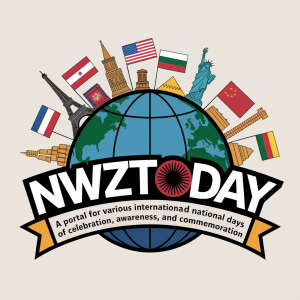Each year, April 11 marks a deeply significant day for millions across the globe: National Fast and Prayer Day. In 2025, this revered day continues to bring communities together in solemn devotion, spiritual reflection, and an uplifting sense of unity. But what makes this day so special? Let’s dive into the history, significance, and ways this day is celebrated.
Why is National Fast and Prayer Day Celebrated?
National Fast and Prayer Day is a time set aside to seek divine guidance, express gratitude, and come together in collective prayer. Rooted in faith and tradition, this day transcends religious boundaries, encouraging people of all beliefs to reflect and connect on a spiritual level. Whether to ask for blessings, express repentance, or show solidarity during times of crisis, the day serves as a reminder of the power of faith in uniting individuals and communities.
The History Behind National Fast and Prayer Day
The origins of this day can be traced back centuries, to times when leaders and communities declared days of fasting and prayer during moments of great need or thanksgiving. In the United States, the tradition gained prominence during pivotal moments in history, such as the Civil War, when President Abraham Lincoln called for a day of “national humiliation, fasting, and prayer” in 1863. Over time, this practice evolved into a recognized annual observance, inviting people to pause and focus on their spiritual well-being and communal harmony.
Significance of the Day
At its core, National Fast and Prayer Day emphasizes the importance of humility, gratitude, and faith. It’s a chance to slow down from the hustle and bustle of daily life, reflect on our blessings, and foster a deeper connection with the divine. For many, it’s a day to seek healing, offer support to those in need, and strengthen bonds within their communities. The act of fasting, often paired with prayer, symbolizes devotion, sacrifice, and a genuine desire for spiritual growth.
How is National Fast and Prayer Day Observed?
Observances on this day vary widely, reflecting the diverse ways people express their faith and spirituality. Common practices include:
- Fasting: Many choose to abstain from food or certain luxuries as a way to focus their minds and hearts on prayer.
- Community Prayer Gatherings: Churches, mosques, synagogues, and other places of worship often host special prayer sessions.
- Acts of Service: Helping the less fortunate, volunteering, or making charitable donations are common ways to honor the day.
- Personal Reflection: Some spend the day in quiet contemplation, journaling, or meditating.
Fun Facts About National Fast and Prayer Day
- In 1941, during World War II, President Franklin D. Roosevelt led the nation in a prayer that was broadcast over the radio, uniting millions in a moment of collective reflection.
- Fasting and prayer traditions are not exclusive to one religion—they’re observed in Christianity, Islam, Judaism, Hinduism, and many other faiths.
- Some communities mark the day with music and cultural performances, blending spirituality with celebration.
Join the Movement
As April 11, 2025, approaches, take a moment to reflect on what this day means to you. Whether through fasting, prayer, or acts of kindness, there’s no wrong way to participate. Invite your friends, family, and community to join you in observing National Fast and Prayer Day. Together, let’s make this a day of unity, gratitude, and hope.








